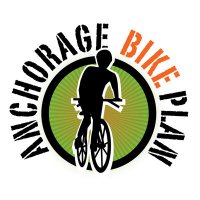 If you’re a regular bike commuter, it’s probably happened to you. You’re riding on your way to work when you notice the car behind you is drifting into your bike lane because the driver is chatting on a cellphone, eating, lighting a cigarette, putting on makeup or reading.
If you’re a regular bike commuter, it’s probably happened to you. You’re riding on your way to work when you notice the car behind you is drifting into your bike lane because the driver is chatting on a cellphone, eating, lighting a cigarette, putting on makeup or reading.
Distracted driving is a huge safety concern on our roads, and Tuesday the U.S. Department of Transportation hosted its second National Distracted Driving Summit to try and find solutions to the problem. DOT Secretary Ray LaHood said on his FastLane blog that the three biggest takeaways from the summit were 1) enforcement works, 2) we must reach America’s young people and 3) Americans don’t need more dashboard distractions.
“I must stress this one idea: Distraction-related crashes are 100-percent preventable; all we need is for drivers to step up and take personal responsibility for the 2,000-pound vehicles they command,” LaHood wrote on his blog. “Distracted driving does not just happen; it is a choice that flies in the face of that responsibility.”
Last year, at least 5,500 people in the U.S. were killed and more than 450,000 people were injured in distracted driving crashes, LaHood said, adding that the real numbers could be higher because not all police agencies note in their accident reports when a wreck is caused by distracted driving. A U.S. government report released Thursday (Sept. 23) reported that auto deaths due to cellphone use and driving jumped from 4,572 in 2005 to 5,870 in 2008, an increase of 28 percent. The report also said texting and driving caused more than 16,000 fatal car wrecks from 2001 to 2007.
While there are many forms of distracted driving, cellphone use has drawn the most attention in recent years because of the rapid growth and acceptance of the new technology. These distracted driving deaths and injuries are 100-percent preventable. The New York Times posted an interactive feature last year that demonstrates how trying to text while driving can affect your reaction time.
 And lest you think it’s only the car drivers causing the problem, cyclists and pedestrians can cause wrecks when they’re using cellphones, listening to music with headphones/earbuds, etc. If we’re the pilot of our mode of transportation, then we can’t multi-task. We need to focus on what we’re doing, if for no other reason than it allows us to respond when someone else isn’t paying attention.
And lest you think it’s only the car drivers causing the problem, cyclists and pedestrians can cause wrecks when they’re using cellphones, listening to music with headphones/earbuds, etc. If we’re the pilot of our mode of transportation, then we can’t multi-task. We need to focus on what we’re doing, if for no other reason than it allows us to respond when someone else isn’t paying attention.
A 2006 study by the University of Utah showed drivers talking on cellphones are as dangerous as drivers who are legally drunk. But young drivers still don’t see the danger as a State Farm Insurance study released on Tuesday showed 36 percent of teen drivers don’t consider themselves to be at risk for a fatal car wreck when they are texting and driving, while 55 percent of them thought they were at risk for a fatal wreck if they drove drunk, and texting is considered a bigger driving distraction than talking on a cellphone.
In September 2008, Alaska became the 14th state to have a law take effect that banned texting while driving. But through May 2010, only 34 people had been charged under the new law. The law also bans having a television, video screen, computer or similar visual device in view of the driver while the vehicle is in motion.
Since the 2008 text messaging/video ban for drivers took effect, two other cellphone-related driving bills have been introduced in the Alaska House of Representatives, though neither has passed. In 2009, Reps. Berta Gardner, Chris Tuck and Cathy Muñoz sponsored a bill banning teen drivers younger than 18 years old from using cellphones. In 2010, Reps. Mike Doogan, Bob Buch, Peggy Wilson and Cathy Muñoz sponsored a bill banning the use of cellphones for all drivers. This year’s bill, written by Doogan, drew the most attention, with an article in the Juneau Empire, an editorial in the Mat-Su Frontiersman acknowledging the danger but saying the bill is too restrictive and should be scaled back, an editorial by John Aronno in the Alaska Commons blog asking for more discussion and less politics about the dangers of cellphone use and driving, while also taking to task an editorial by contributor Alex Gimarc in the Alaska Standard blog that called for civil disobedience if the law passed.











You must be logged in to post a comment.